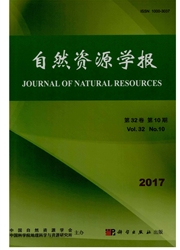

 中文摘要:
中文摘要:
结合我国实际,对Kaya等式进行扩展,引入经济效应影响因子、能源强度影响因子、行业贡献影响因子和碳排放强度影响因子,构建了行业CO2排放增长驱动力模型。论文应用该模型测算和分析了1990年至2010年我国6个经济部门CO2排放的驱动因素。结果显示:①1990—2010年,影响我国各行业CO2排放的正向驱动因素主要是经济效应,负向驱动因素主要是能源强度效应和碳排放强度效应;②碳减排政策的制定要权衡经济发展和碳减排的政策协同;③1997-2000年和2005-2010年CO2排放量减少或增速减缓的主要驱动力是能源强度效应和行业贡献效应;④基于国情,产业结构调整在短时间内对CO2减排效力不大,而是一个长期的减排战略。
 英文摘要:
英文摘要:
Kaya Identity is extended by adding several variables based on China's actual sit- uation, such as economic efficiency factor, energy efficiency factor, sector contribution fac- tor and carbon intensity factor. A model of drive factor for carbon emission growth (DFMCE) is proposed in this paper. The model of DFMCE is used to analyze the drive fac- tors of CO2 emissions in different sectors in China. Four stages are divided in this paper, which is Steady Growth Stage, Slow Decrease Stage, Rapid Growth Stage, and Slow Growth Stage. The drive factor for CO2 emissions of several sectors in China are analyzed and calculated in four stages during 1990-2010 by DFMCE. The result shows that: 1) Eco- nomic effect factor is the major positive factor for the growth of CO2 emissions in each sec- tor during 1990-2010, meanwhile energy efficiency factor and carbon intensity factor are the major negative factors. 2) There is a strong relationship between CO2 emissions and eco- nomic development. The CO2 emissions reduced rapidly which will affect the level of eco- nomic development and the living standards of the people. The balance of CO2 emissions and economic development should be considered when policies are made. 3) Energy efficien- cy factor and industrial structure factor are the major drive for CO2 emission reduction or slowdown in Slow Decrease Stage and Slow Growth Stage. 4) The adjustment of industrial structure does not demonstrate the validity of CO2 emission reduction in the short term ac- cording to the actual situation, but the long term is.
 同期刊论文项目
同期刊论文项目
 同项目期刊论文
同项目期刊论文
 期刊信息
期刊信息
